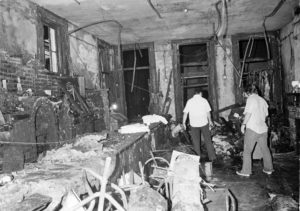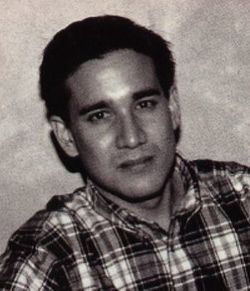By: Nadia Yassin
Based on the patterns of killer’s offenses, experts have come up with three major classifications to define different murderer’s behavior.

If you’re a reader of true crime content or consider yourself a Citizen Detective, you know that murder is the killing of another person without valid justification. While the thought of one murder is abundantly tragic, sadly, some individuals choose to commit this dreadful act more than once.
But, just because one person took the lives of multiple people doesn’t mean they’re a serial killer (despite what we’ve heard on TV shows). In fact, there’s three major categories that experts use to characterize these heinous acts: serial murder, spree murder, and mass murder.
Not only are these different categories important for research and investigations, but these categories are also the blueprints for understanding the criminal mind.
The FBI details that…
Serial murder is “the unlawful killing of three or more victims by the same offender(s), in separate events.” While previous definitions required a specific number of victims varying from 2 to 10, the FBI explains what’s most important to define serial murder is the required separate occasions and a cooling-off period, between offenses.
Spree murder is “two or more murders committed by an offender or offenders, without a cooling-off period.” It is this cooling off period that marks the distinction between a spree murder and a serial murder.
Mass murder is described as “three or more murders occurring in the same general area over a short period, with no distinctive time period between the murders; this classification can be differentiated through spatial and time characteristics.”
Who could commit such horrible acts?
Criminologists and forensic psychologists often site the four sets of ‘Ls’ for why someone kills: lust, love, lothing, and loot (money). To that end, these specific offenders who kill multiple people often operate with more complex motives, and their offenses are often on a more heinous scale.
Mass Murderer

The aftermath of The UpStairs Lounge Fire, an attack by a mass killer.
In the Crime Classification Manual, written by Douglas, Burgess, Burgess, and Ressler (2013), the prototypical mass murderer is defined as “a mentally disordered individual whose problems have increased to the point that he acts out against groups of people who are unrelated to him or his problems, unleashing his hostility through shootings and stabbings.”
Presently, most mass murders turn to firearms and commit mass shootings — 98% of these are carried out by men.
But again, human behavior is complex, and it doesn’t always fit perfectly into fixed categories.
For instance, the 1973 mass murder of 32 individuals at a gay bar “The UpStairs” in the French Quarter of New Orleans wasn’t a result of gun violence or stabbing; it was arson.
An unidentified individual emptied a can of lighter fluid in the stairwell leading up to the second story bar and sparked a flame, trapping over 60 people in the burning building. The tragedy is largely forgotten due to the culture surrounding homophobia at the time, and the victims were not treated kindly. Yet, it’s the textbook definition of a mass murder event.
Spree Murderer
Moreover, a good example of a spree killer who takes the lives of multiple different people at different locations with little to no cooling off period is Andrew Cunanan.

Andrew Cunanan, 1990s.
Andrew Cunanan murdered at least 5 people spanning from April 26, May 3, May 9, and July 15th across multiple states before ultimately committing suicide. The killings took place in different locations and at different times but had no real “cooling off” period.
Eighty days is not a lot of time to brutally end the lives of 5 people.
Some tragedies are so complex, they involve spree murder and mass murder tendancies, like the the Sandy Hook Elementary School shooting,
Adam Lanza committed mass murder when he took the lives of children and teachers at the school the morning of December 14, 2012, but because he murdered his mother earlier that day in a different location, his actions fit the definition of spree murder as well.
As noted in this example, some experts argue that spree killing should be eliminated as a category of multiple murder because not only is a “cooling off” period difficult to measure, but it also doesn’t always exist as a mutually exclusive categorization of murderers.
Serial Murderer
The distinction between serial and spree murder is marked by a “cooling off” period between murders and can be illustrated using the case of Dennis Rader, the “BTK Killer”, who killed from January 15, 1974 to January 1991 and had a period of at least a few months between each murder.

Dennis Rader while on trial for murder.
This marked period of time between each murder is what distinguishes Dennis Rader as a serial murder, and Cunanan as a spree murderer.
Criminal Profiler John Douglas also coined the term emotional cooling-off period which is defined as the time when an offender attempts to use traditional methods of emotional regulation in between homicides. This is when they “recover” after the provocation and stress that triggered their offense to begin with.
This is different compared to a traditional cooling-off period which is when an offender simply supprses homicidal urges with their everyday routine. In general, cooling off periods can be days, weeks, months, and in rare instances — years for serial murderers.
Jack the Ripper, Jeffrey Dahmer, Sam Little, and Ted Bundy are all notorious serial killers that have been studied by many in an effort to examine their characteristics and motivations.
Love this post? Meet the Author.
Nadia Yassin is a Case Researcher and Content Contributor Extern at Uncovered, where she aggregates research on unsolved cold cases and assists with the twice-weekly newsletter, The Citizen Detective. Nadia is completing her Master of Arts in Forensic Psychology from John Jay College of Criminal Justice, where she focuses on investigative psychology and the behavior of violent criminals. Nadia believes that knowledge, attention, and compassion are key to building a brighter future.
